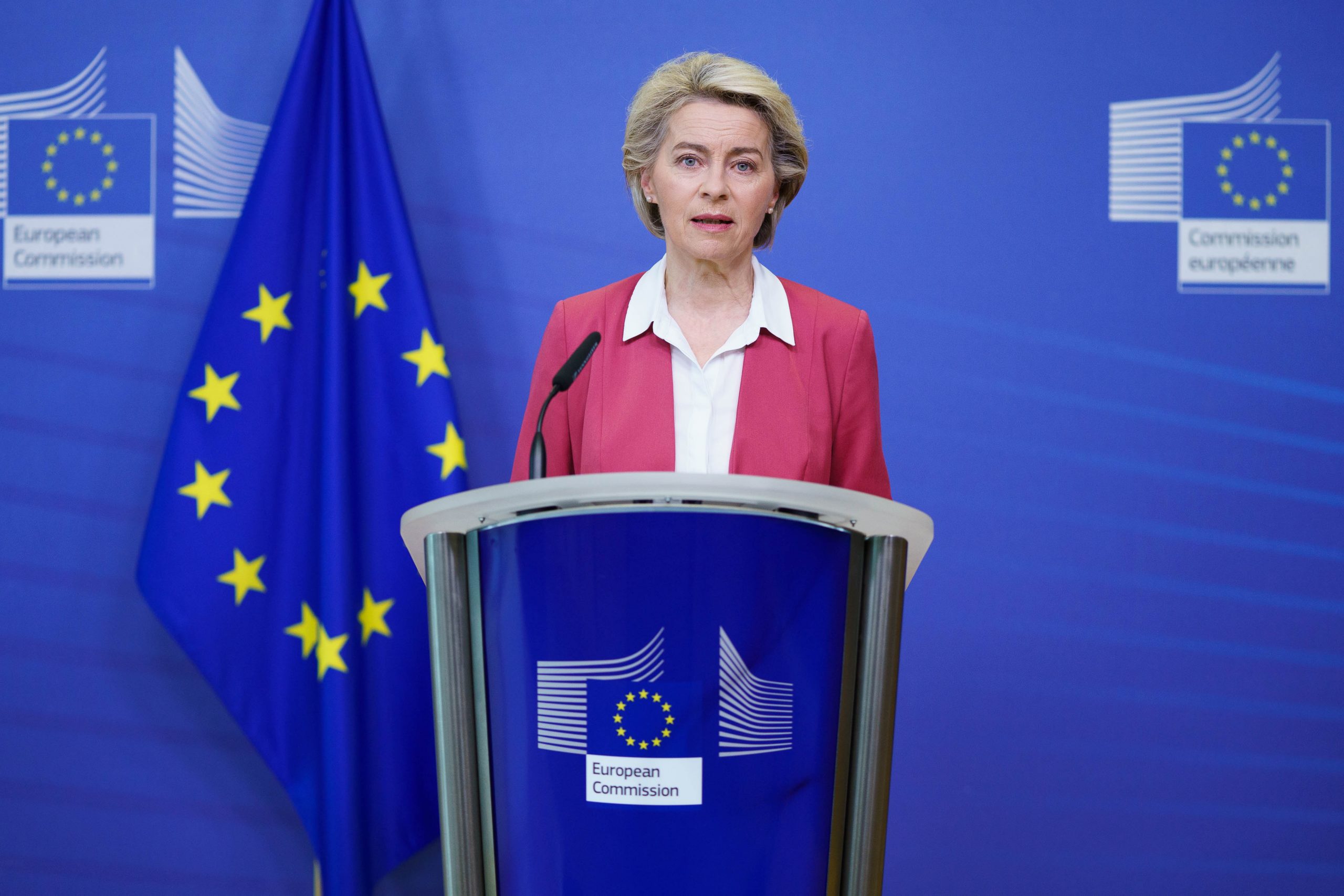Opening remarks by President von der Leyen at the joint press conference with President Michel following the special meeting of the European Council of 9 February 2023

Indeed, I wanted to have a look at the two topics that have been discussed this afternoon and this night.
The discussion on competitiveness in the European Union is first of all rooted in a very wide consensus: We need to reach climate neutrality by 2050, and we want the European clean-tech industries to help us get there. We are very strong advocates of fair competition also on the global stage. This is particularly true in the clean-tech sector. And as I said, we welcome competition in this area. In fact, we have a head start with the clean-tech industry. We have an innovative and competitive industry. We have a plan, that is our roadmap to 2050 – Fit for 55. And we have financial and policy support with NextGenerationEU. So the setting is good.
Now, we need to preserve our edge – that is the challenge right now – on the development, manufacture and roll-out of clean technologies. And this especially against the backdrop of the Inflation Reduction Act. That was the main topic of the debate. I have presented to the Leaders our Green Deal Industrial Plan. You know the main work strands. The first one is a regulatory environment that incentivises clean-tech investments. The second one is funding, both through a targeted and temporary flexibilisation of state aid, and EU-level funding. Of course, the aim of this investment is to also unleash private capital. The third element is skills. And finally, the fourth work strand is an active trade policy to strengthen our supply chains.
I know that the public debate focuses a lot on state aid flexibility and EU funding. That is all right. But I want to emphasise that in fact all four strands need to work hand in hand. So, we need a stable and simple regulatory environment if we want state aid and EU funding to trigger investments. And this also requires a well-functioning European capital market. And likewise, the speed to train new qualified workers is as important as the speed to issue permits. And access to the necessary critical raw materials is as crucial as access to finance. So the overall picture has been discussed at this Council. The Commission will now table the concrete legal proposals mid-March, in time before the European Council of next March.
On migration, I think it is very important that the European Council has clearly recognised that: ‘Migration is a European challenge that requires a European response.’ We should keep in mind that this European approach – so working together as 27 – allowed us to successfully, for example, defeat the hybrid attack by Belarus with the weaponisation of migrants. It also allowed us to welcome millions and millions of Ukrainian refugees fleeing Putin’s bombs. So, the lesson learnt in the past is: We need to act together. When we do so, there is no challenge we cannot overcome. I am therefore glad that we agreed on very concrete and operational steps forward. There are two tracks, two work strands.
The first one is the finalisation of the work on the Pact on Migration and Asylum. That is key. So far, we have made good progress. And we need to keep up the good pace. I now count on the Swedish and the Spanish Presidencies, and of course on the European Parliament, what that is concerned.
The second track was the main focus tonight. It relates to operational measures we can take now. The first one: Borders must be managed. We will act to strengthen our external borders and prevent irregular migration. For that, we will focus on two pilot projects on borders. In other words, we will provide an integrated package of mobile and stationary infrastructure – from cars to cameras, from watchtowers to electronic surveillance. This requires EU funding. Bilateral contributions are welcome. And of course, it also requires national funding. Then we will also launch pilot projects that focus on border procedures in order to showcase best practices – so registration, fast and fair asylum procedures, how to deal with returns. Frontex, the EU Asylum Agency and Europol will support these pilot projects.
Furthermore, concrete steps: the Leaders agreed to mutually recognise return decisions. This will allow to be faster with returns. The principle is: If a return decision is taken in one Member State, it is valid in all Member States. So if the person moves to another Member State, you do not have to go through the same procedure again, the return decision is valid. And the Leaders have also agreed to increase the use of the safe country concept. This will pave the way towards a develop a common European list – that is the goal – and thus a common European approach for increased returns.
And the third point is: Indeed, on returns, we discussed how it is possible to step up our engagement with key partners, so the countries of origin. We agreed that we need to speak with one voice at the European level, as one Europe. There are different Member States with different good relations with countries of origin. We should always use the whole-of-Europe approach, a holistic approach. And we have many different incentives that we can use, while recognising the interests of our partners. For example, to create legal pathways.
Finally, while awaiting the adoption of the New Pact on Migration and Asylum, we discussed that we need to better support Member States under pressure. The voluntary solidarity mechanism needs to deliver to ensure effective solidarity. At the same time, it is important to address secondary movements through the correct implementation of the Dublin mechanism. It is good that there has been an agreement in December on a Dublin roadmap. This should now be pushed forward as soon and as fast as possible.
